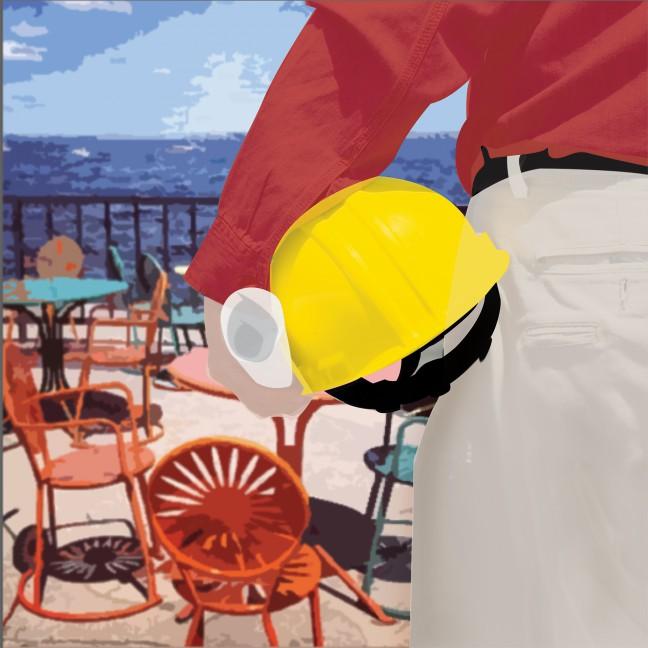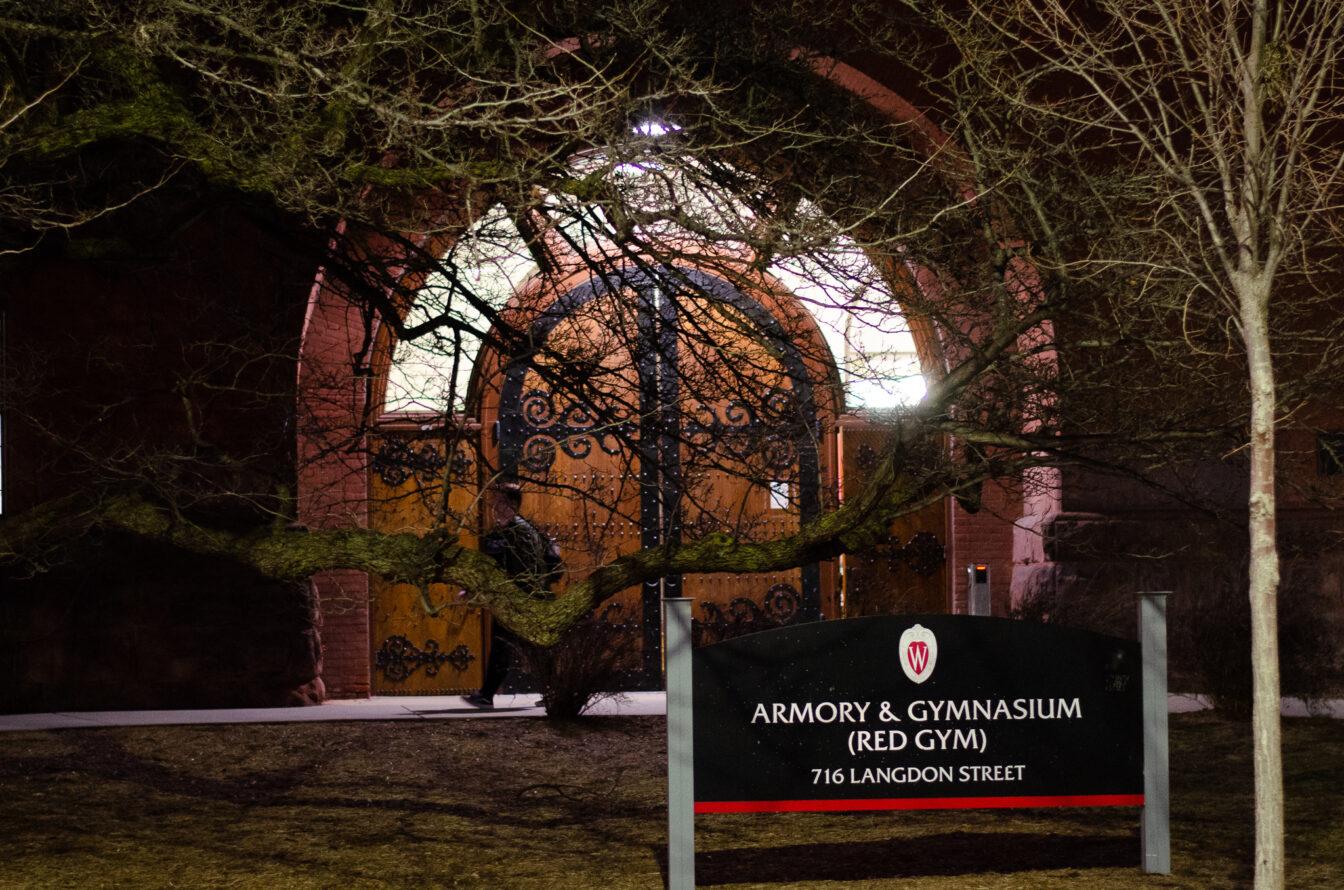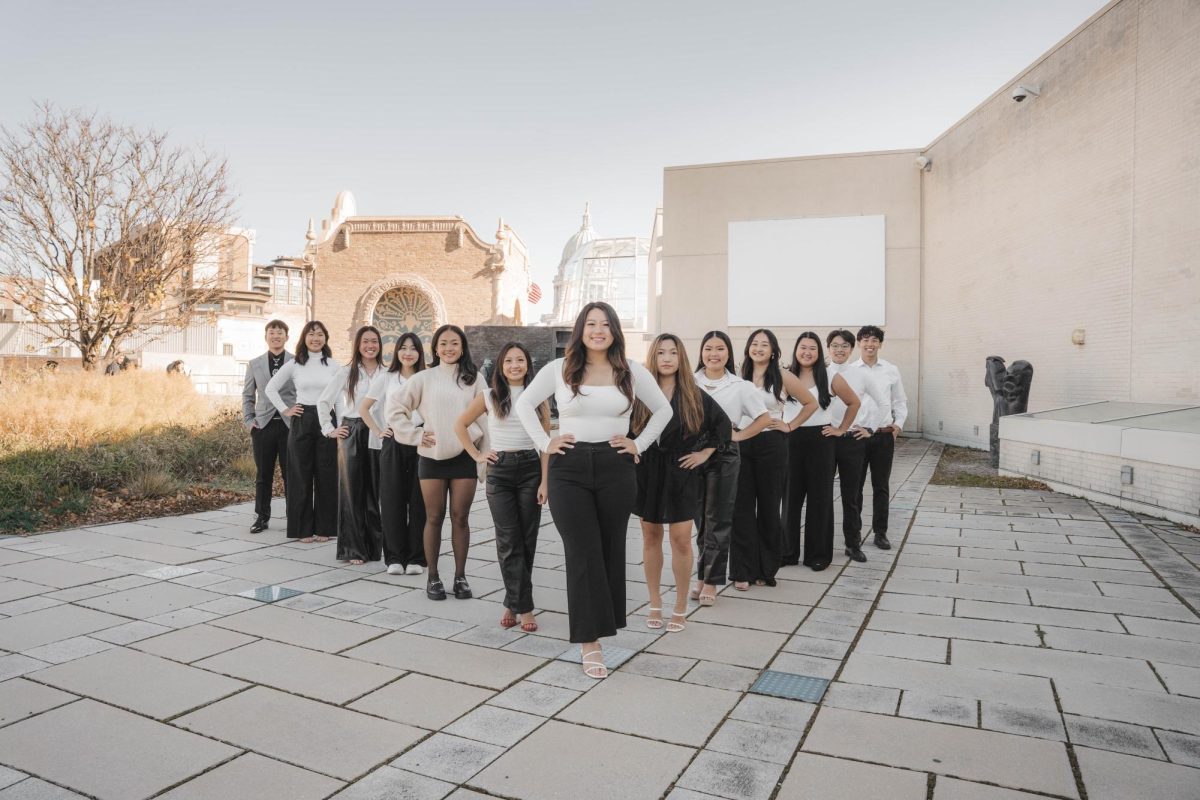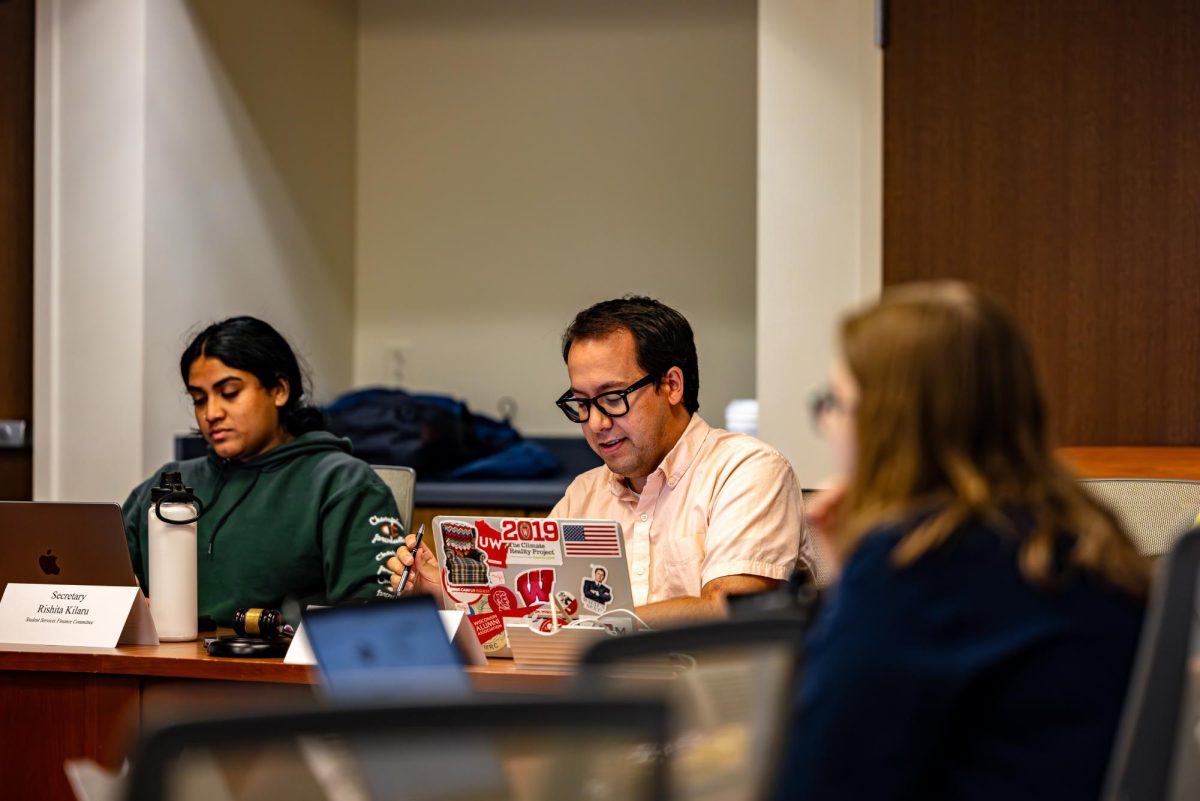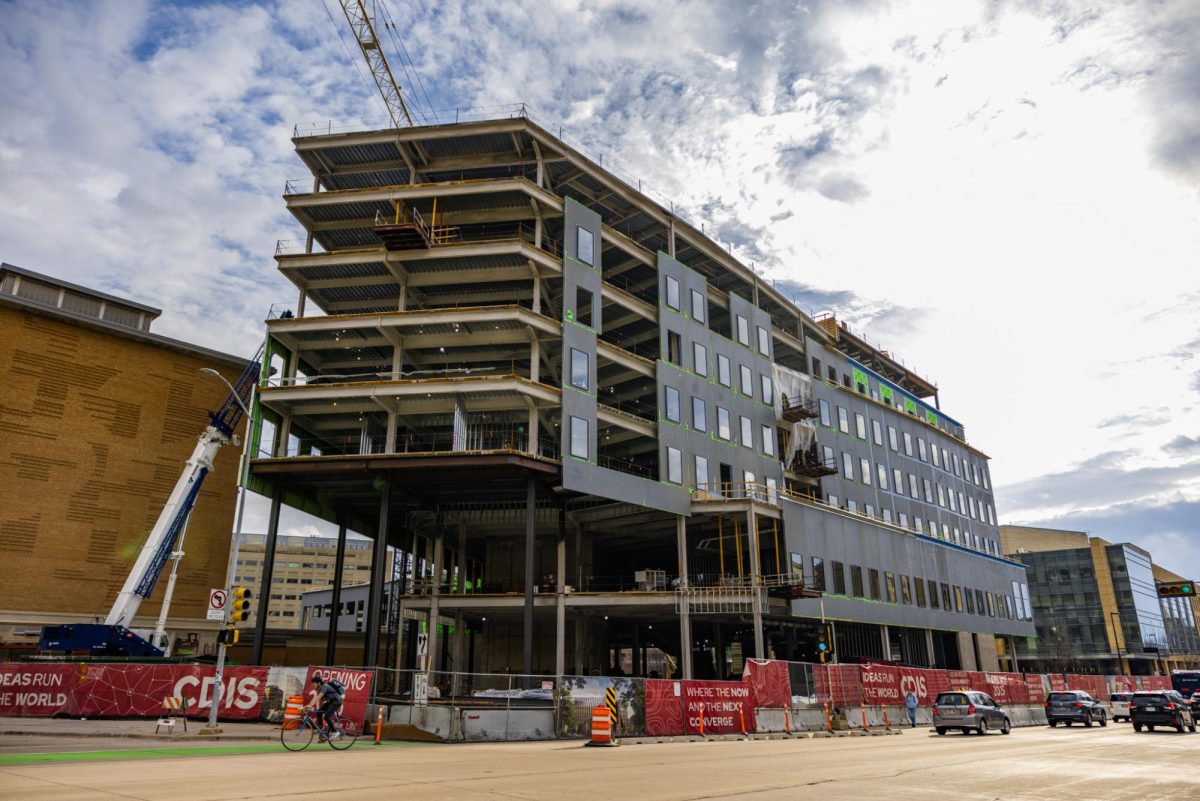Construction projects across campus change traffic patterns, limit walking options and create noise pollution, but their purposes tend to be unclear. Tip toeing over gravel construction sites and dodging bulldozers, University of Wisconsin students carry on with their daily schedules, the delays from construction only slightly frustrating.
Despite budget cuts that slashed $250 million in state funding to the UW System, most construction projects have been unaffected because they do not depend on taxpayer dollars.
Renovations currently in progress across campus and present in UW’s Campus Master Plan, a guideline document outlining all future construction, look to make campus more environmentally sustainable and overall efficient.
UW faces ‘chaos, uncertainty’ from state budget cuts in upcoming semesters
Memorial Union
Currently in Phase II of the project, construction on the Memorial Union focuses on floors one through four. The first floor is projected to open in fall 2016 with multiple eateries replacing the cafeteria-style dining room and an updated Der Rathskellar.
Shauna Breneman, Memorial Union spokesperson, said Phase II will cost $50.58 million, including a requested $4 million extra of revenue funding from already available borrowing capacities for unforeseen costs. The extra funding would cover replacement of existing plaster and terrazzo, installation of a more environmentally friendly HVAC system using calcium peroxide and reparation of deteriorated terracotta on the east wing exterior.
Set to open in 2017, construction on floors two through four include preservation of several “iconic spaces” like the Great Hall, where many people have celebrated weddings and anniversaries, Breneman said.
“We are really working on preserving historic elements that make the Memorial Union something special, something that people look forward to visiting every time they come [to Madison],” Breneman said.

Regents approve millions in funding for Witte, Memorial Union renovations
Totaling $55.2 million, Phase I of the Memorial Union reinvestment project focused on the union’s west wing and fifth floor. To address accessibility issues, ramps, lifts and elevators were added. Within Phase I, updates to the HVAC systems, lighting and plumbing were made. Renovations were also made to west wing features, including Outdoor UW, Wheelhouse Studios, Wisconsin Union Directorate and the Wisconsin Union Theater.
As a self-supporting organization, Breneman said no funding comes from taxpayer dollars. The project is funded through private donations, operating revenue and segregated fees.
Students paid $48 per semester in segregated fees for the first two years of the plan. Beginning in 2014, that number rose to $96 per semester, which will last up to 30 years and cover up to 58 percent of the project’s cost.
Breneman said the referendum process for the Memorial Union reinvestment project began in 2005, but construction did not start until 2012. She said overall the project aims to improve accessibility for all guests and update infrastructure.
“The Memorial Union reinvestment project is about preserving our memories and history while ensuring that the Memorial Union is going to be here for generations to come,” Breneman said.
Alumni Park
With a footprint between Memorial Union, the Red Gym, Langdon Street and the lakefront, the Alumni Park will cap off East Campus Mall in spring 2017, improving lakeshore access and increasing green space, Mary Carbine, Alumni Park managing director, said.
Carbine said the park will function as a place to honor alumni and inspire current students through museum-quality outdoor exhibits. The exhibits will be built with materials to withstand harsh Wisconsin weather and honor the achievements of nearly 200 alumni. Carbine said it will also highlight notable UW traditions and innovations.
“The park will really tell stories about alumni and … their impact on the world,” Carbine said.
In addition to the park’s exhibits, the Alumni Association launched a companion website that will allow visitors to go deeper into the featured alumni’s stories and contribute their own stories or those of other alumni. Carbine said alumnipark.com is currently accepting content from users.
Funding for the park, which is a part of the Lakefront Gateway plan, comes from private donations and serves as a gift to the university from alumni and friends. The Alumni Park, the Memorial Union Reinvestment and One Alumni Place make up the Lakefront Gateway.
Connecting to the Alumni Park, One Alumni Place will serve as a visitor center for UW graduates with a lounge and rooftop terrace.
University Housing
University Housing’s master plan for major construction over the next eight years includes the renovation of Witte, Slichter, Kronshage and Sellery Residence Halls, Brendon Dybdahl, University Housing spokesperson, said.
Beginning in March 2017 and totaling nearly $47 million, Witte Residence Hall will undergo major renovation over a two-year span to “address mechanical issues, improve the resident spaces and upgrade the facilities,” according to University Housing’s website.
University Housing predict a similar budget will be necessary to complete the same renovations on Sellery Residence Hall in 2022, Dybdahl said.
The construction plans for Witte include a new connecting link and central space between Witte’s two towers, according to the website. This space will contain new elevators and floor lounges. Each floor will also have renovated and expanded bathrooms.
“The connecting tower allows us to phase the construction project in a way that we don’t have to close the building down for a year or two,” Dybdahl said. “We can actually build this connecting tower while the building is occupied in some parts of the year and stage things gradually so we can keep students in that building.”

Each floor will lose several rooms where the central space connects, Dybdahl said.
Witte will have an additional residence floor built on the top of the building to compensate for the rooms displaced by the renovations, he said.
Heating, ventilation and air conditioning systems will also be replaced, Dybdahl said. Each resident room will have individual temperature controls throughout all of Witte, he said.
Adding individual temperature controls to each room is in an effort to increase energy efficiency, Dybdahl said. Individual room controls tend to be more efficient than having a single temperature set for the whole residence hall, he said.
Air conditioning systems will not only benefit student residents during the academic year, but youth camps and conference groups during the summer, Dybdahl said.
Dybdahl said the utilities for the new heating and air conditioning systems will be housed in the connecting link to prevent the loss of resident rooms.
All of University Housing’s funding comes from the room and board residents pay and revenue generated by summer conference groups and youth camps, Dybdahl said. University Housing does not receive any taxpayer money, he said.
Renovations and construction projects are always an ongoing part of University Housing’s annual budget.
“For the most part, University Housing is not impacted quite as directly by budget cuts as some of those other areas are that are dependent on taxpayer money,” Dybdahl said.
Construction on Slichter Hall will begin in 2019, construction on Kronshage Hall will begin in 2020 and construction on Sellery Hall will begin in 2020, according to the website.
University Housing’s current timelines are tentative, Dybdahl said, and they depend on state processes and approvals.
“The reason we have a plan like this and try to address every building over time is to keep our facilities comfortable and modern for our residents and up to their expectations,” Dybdahl said.
Campus Master Plan
The Campus Master Plan is a 10-year vision for UW and is updated by Facilities Planning & Management every decade. It is a guideline document used for all future development and construction, Gary Brown, campus planning and landscape architecture director, said.
“The Master Plan is a guiding road map to make sure that we’re looking into the distance, looking into the future and making sure that we’re providing spaces and doing things orderly,” Brown said.
The 2015 Master Plan focuses on outside landscape development, Brown said.
UW campus Master Plan looks to make campus more eco-friendly
In 2005, the plan looked at UW’s building capacity and the amount of development necessary over the next 10 years. The current plan updates these recommendations, Brown said.
Facilities Planning & Management are also creating a transportation, utility, stormwater management and green infrastructure Master Plan, which all fall under the umbrella of the Campus Master Plan, Brown said.
One major project the plan includes is a large overhead landbridge over the intersection of North Charter Street and Linden Drive, Brown said. This bridge will reduce the pedestrian conflict in the intersection during class change and help with traffic movement, he said.
“The idea is to actually make this an iconic space,” Brown said. “It wouldn’t be just a bridge like we have on Park Street, it would be a much bigger space with trees, landscaping, benches and tables.”
The plan also looks at creating bigger courtyards and green spaces.
Every project in the Campus Master Plan has to be included in the capital budget, which is written every two years, Brown said. There are currently three projects in the planning stage, 21 in the design stage and 14 in the construction stage.
Projects in the planning stage do not have have official approval from the state’s capital budget, Brown said, but once the project is enumerated in the capital budget, it can move into the design stage.
To implement specific projects from a much larger Campus Master Plan, projects are assigned to a more manageable school, college or unit master plan, Brown said. Then each project is put into a capital budget as the project moves forward, he said.








